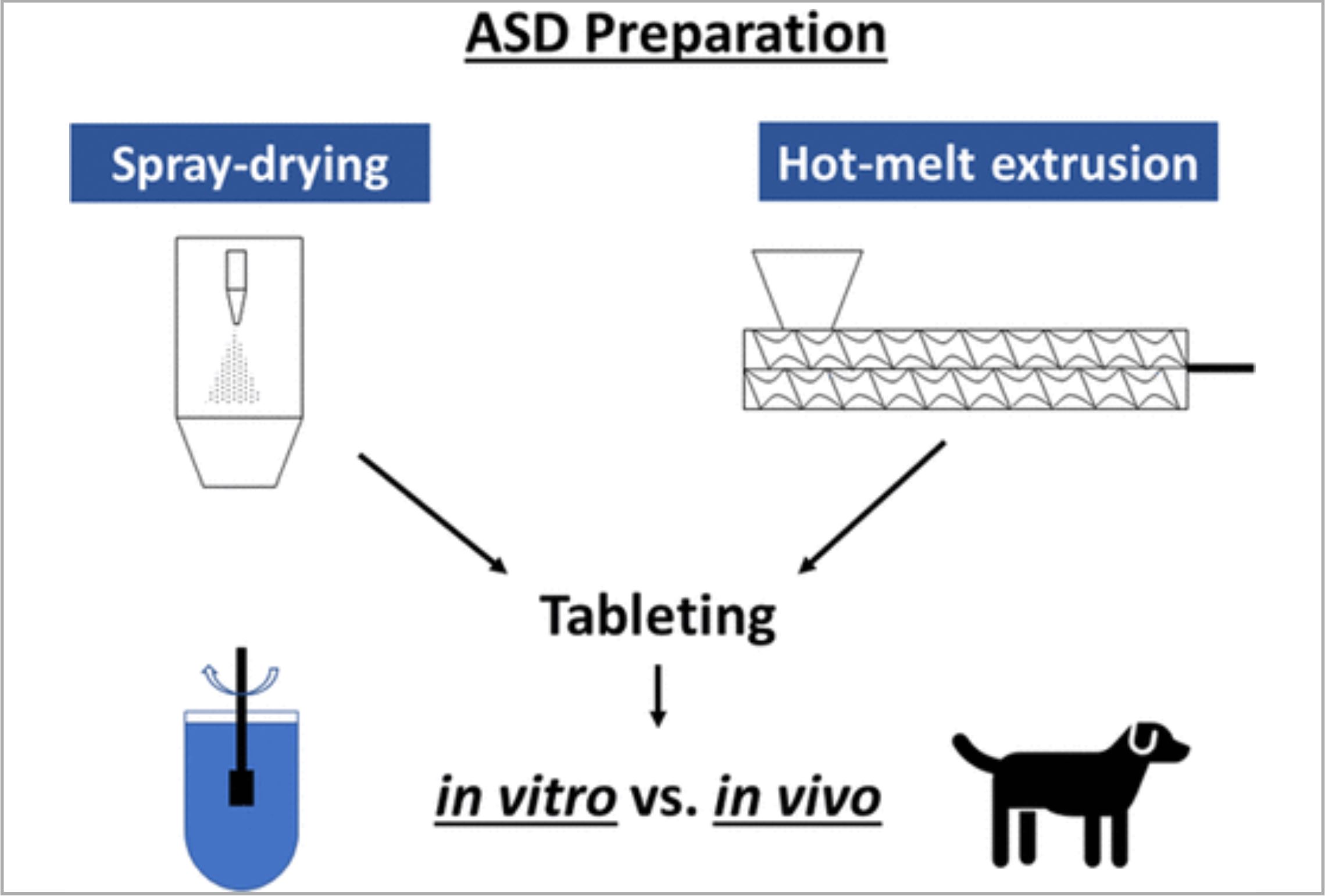Development of Ternary Amorphous Solid Dispersions Manufactured by Hot-Melt Extrusion and Spray-Drying – Comparison of In Vitro and In Vivo Performance

Producing amorphous solid dispersions (ASDs) by hot-melt extrusion (HME) is favorable from an economic and ecological perspective but also limited to thermostable active pharmaceutical ingredients (APIs). A potential technology shift from spray-drying to hot-melt extrusion at later stages of drug product development is a desirable goal, however bearing the risk of insufficient comparability of the in vitro and in vivo performance of the final dosage form. Hot-melt extrusion was performed using API/polymer/surfactant mixtures with hydroxypropyl methylcellulose acetate succinate (HPMCAS) as the polymer and evaluated regarding the extrudability of binary and ternary amorphous solid dispersions (ASDs).
Additionally, spray-dried ASDs were produced, and solid-state properties were compared to the melt-extruded ASDs. Tablets were manufactured of a ternary ASD lead candidate comparing their in vitro dissolution and in vivo performance. The extrudability of HPMCAS was improved by adding a surfactant as plasticizer, thereby lowering the high melt-viscosity. d-α-Tocopheryl polyethylene glycol succinate (TPGS) as surfactant showed the most similar solid-state properties between spray-dried and extruded ASDs compared to those of poloxamer 188 and sodium dodecyl sulfate. The addition of TPGS, however, barely affected API/polymer interactions.
The in vitro dissolution experiment and in vivo dog study revealed a higher drug release of tablets manufactured from the spray-dried ASD compared to the melt-extruded ASD; this was attributed to the different particle size. We could further demonstrate that the drug release can be controlled by adjusting the particle size of melt-extruded ASDs leading to a similar release profile compared to tablets containing the spray-dried dispersion, which confirmed the feasibility of a technology shift from spray-drying to HME upon drug product development.
Read more here
Development of Ternary Amorphous Solid Dispersions Manufactured by Hot-Melt Extrusion and Spray-Drying─Comparison of In Vitro and In Vivo Performance, Eduard Trenkenschuh, Simone M. Blattner, David Hirsh, Ragna Hoffmann, Christian Luebbert, and Kerstin Schaefer, Cite this: Mol. Pharmaceutics 2024, Publication Date:February 12, 2024,https://doi.org/10.1021/acs.molpharmaceut.3c00696
© 2024 American Chemical Society
Read more on TPGS here and watch also the interesting video on Vitamin E TPGS below:

